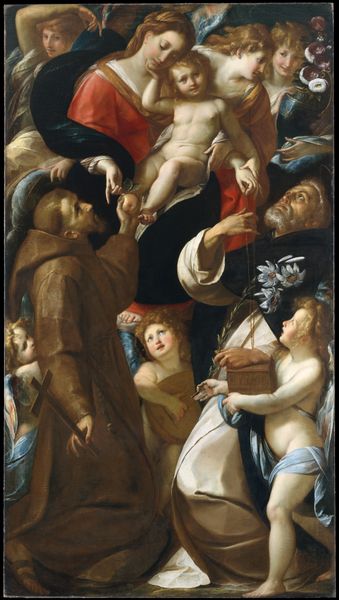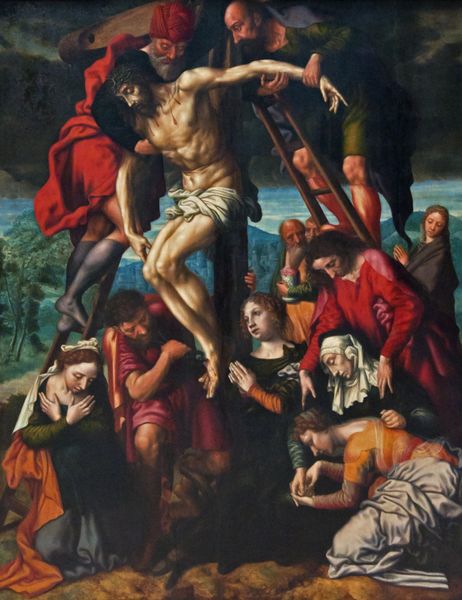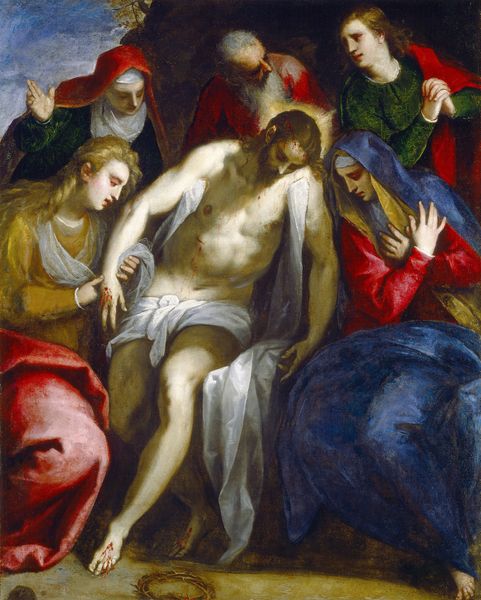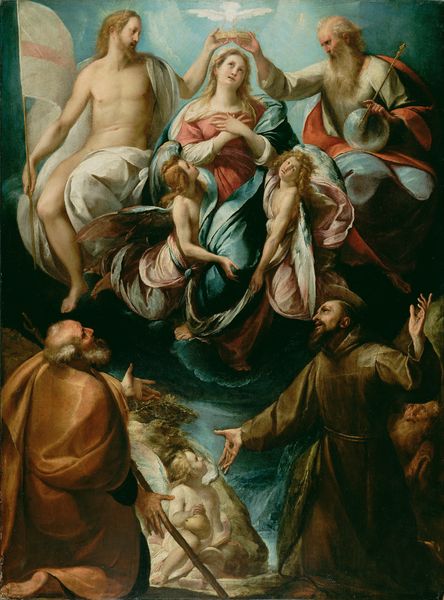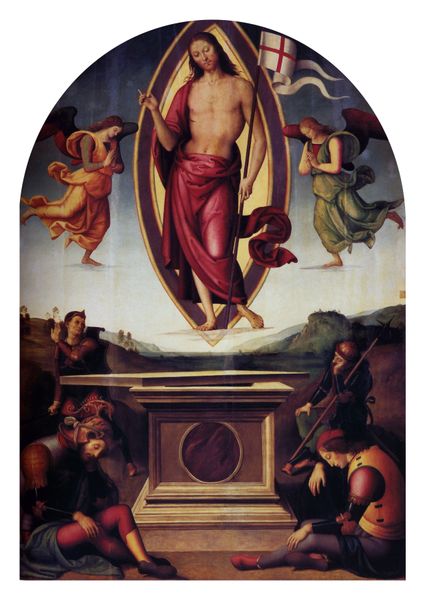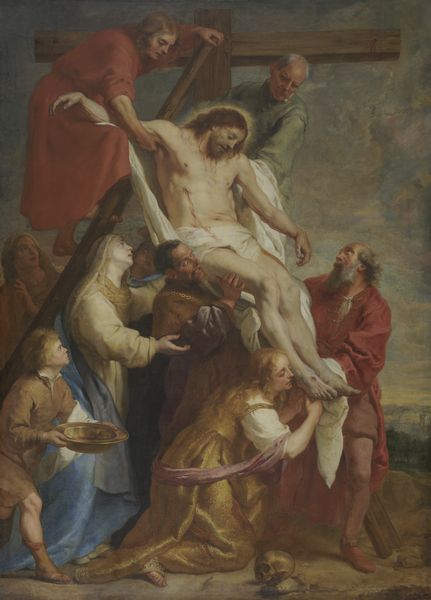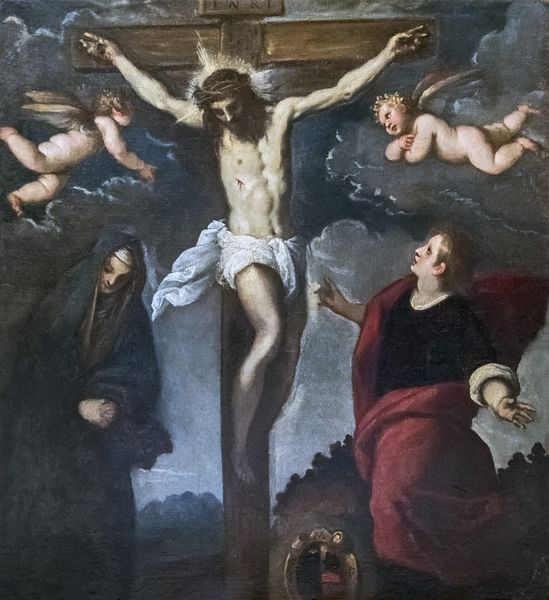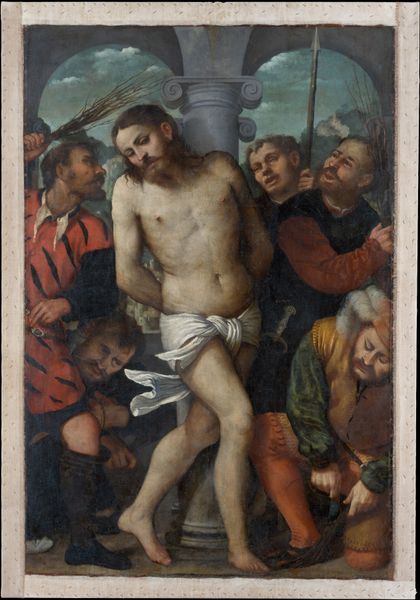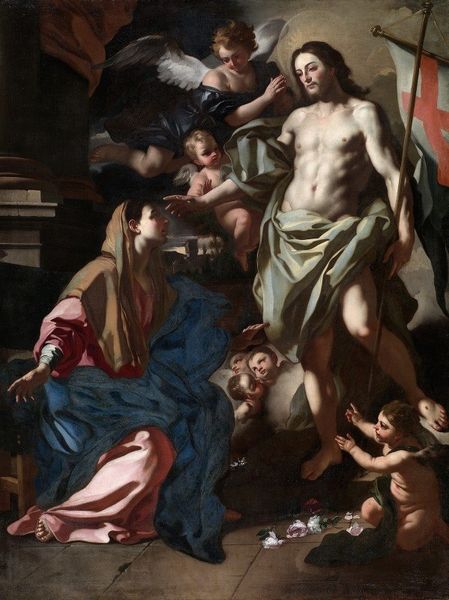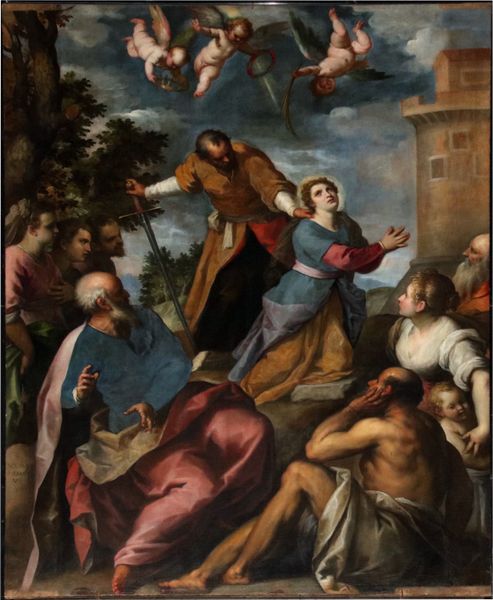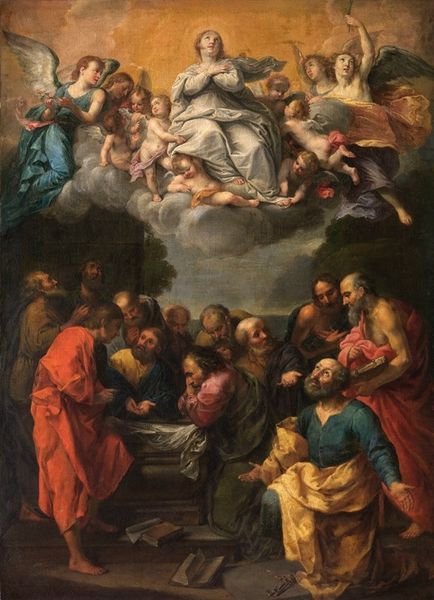
oil-paint
#
portrait
#
allegory
#
oil-paint
#
mannerism
#
figuration
#
oil painting
#
history-painting
Copyright: Public domain
Curator: "Epitaph of Goldsmith," an oil painting created around 1593 by Bartholomeus Spranger, showcases the artist's flair for Mannerist style. I’m curious to hear your initial reaction to it. Editor: It strikes me as remarkably theatrical. The exaggerated musculature of the central figure, the swirling drapery, the dramatic lighting—it's all so consciously constructed for maximum impact. Curator: Absolutely. It is theatrical but very purposeful. Looking at its history, it acts as both a memorial to a deceased goldsmith and as a larger statement about faith, salvation, and the social dynamics of the era. Editor: I can see that, especially in the contrast between the celestial realm above and the more earthly figures below. The play of light and shadow across their faces creates a tangible sense of weight, a human gravitas grounded against the airy figures up top. The textures and volume provide dramatic tension. Curator: Precisely! The individuals in the lower section likely represent the Goldsmith's family or patrons, rooted in earthly existence while Christ is ascending to a more glorified status. The angel's gesture, extending towards the goldsmith in this very moment, underscores the power dynamic at play. Even more significantly, it asks: Who can even hope to be saved? Editor: The spiral composition is also remarkable. The gaze pulls you upwards, guided by these diagonals toward the bright and shining body. One’s perspective is so deliberately manipulated; it's breathtakingly effective! Curator: Exactly, this upward movement visually reinforces the goldsmith's spiritual trajectory and links it back to this elite patron circle. Furthermore, note how Spranger skillfully weaves allegory and portraiture together. In this historical context, what would it have meant for him to be associated with such spiritual grandness? Editor: An ambitious statement. Now looking again, I must admire the almost serpentine curves of Christ's body—how this reflects the Mannerist focus on distortion of an idealized body—and the overall impact of these twisting, complex forms. Curator: Right, it's about presenting both a physical form that is powerful yet contorted. "Epitaph of Goldsmith" provides so much context about the spiritual and social ambitions that shaped this moment in the history of art. Editor: Yes, but beyond its contextual layers, the visual dynamic alone provides a captivating testament to artistic expression, and, of course, what makes Mannerism unique.
Comments
No comments
Be the first to comment and join the conversation on the ultimate creative platform.
